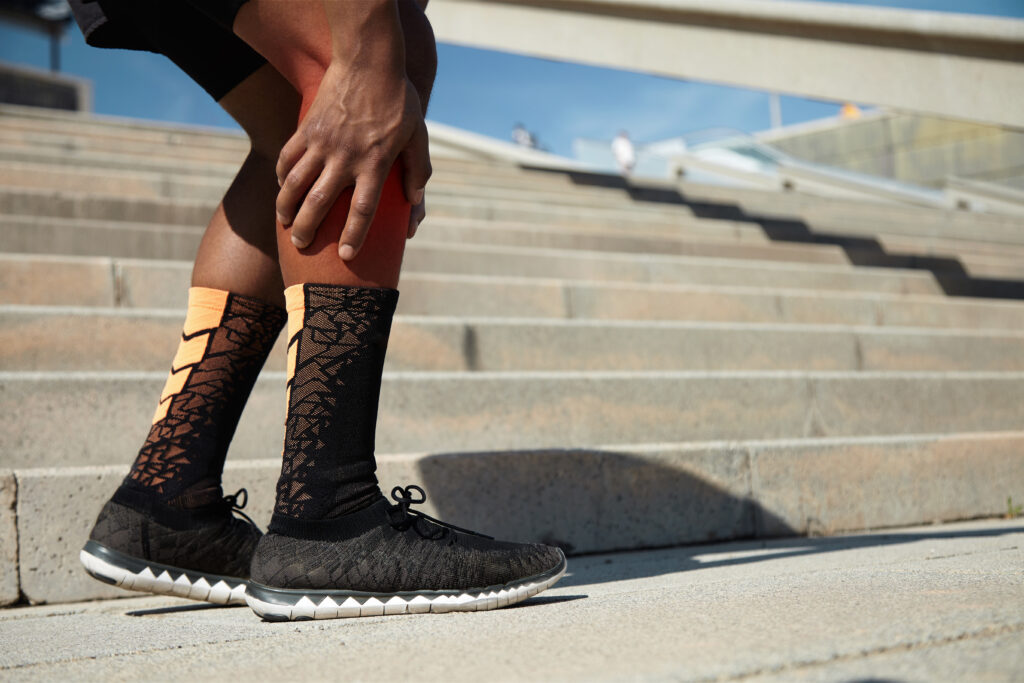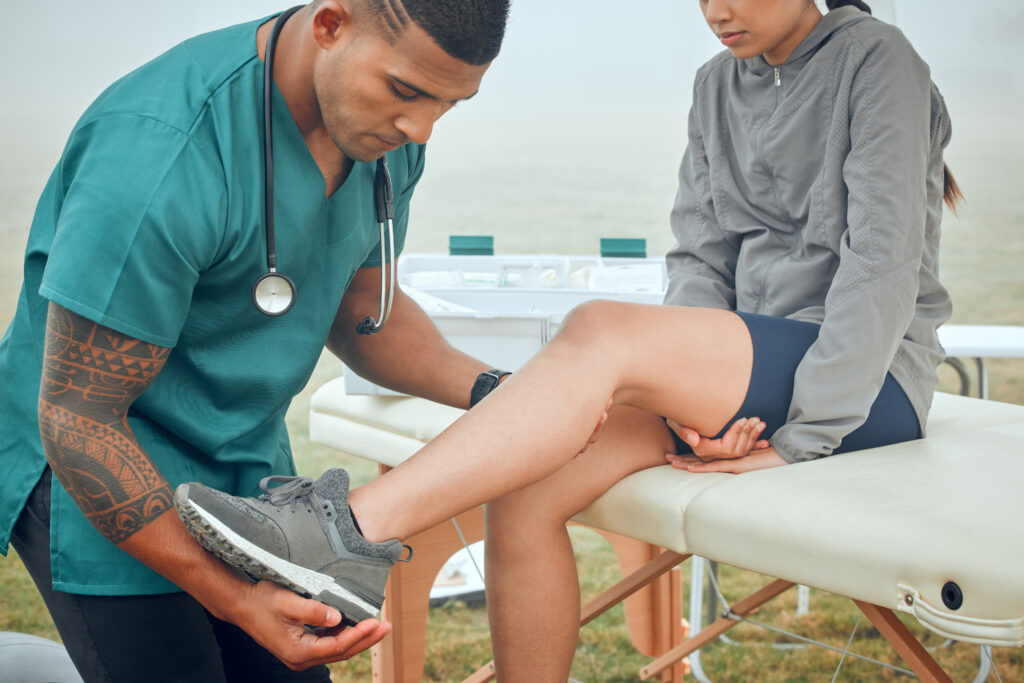If you felt a dull pain along the front of your lower leg or shin bone, chances are you’ve had shin splints. It’s a common yet frustrating hurdle for many individuals and runners, including experienced ones. Understanding this condition and following preventive strategies are key to a long and enjoyable workout experience.
What Are Shin Splints?
Also known as medial tibial stress syndrome, shin splints is common among people who do moderate to heavy physical activity, such as running. While generally manageable, sometimes the pain can be so intense that you must rest.
Some factors contributing to shin splints include overtraining, poor footwear, overtight or weak triceps surae muscles, and muscular imbalances at the ankle. Runners, military recruits, dancers and individuals with a body mass index above 30 are at a higher risk.
Is it Normal to Get Shin Splints as a Beginner Gym-Goer?
Yes, beginner runners can be affected. It’s easy to get enthusiastic about trying a new activity, but doing too much too soon can trigger shin splints. Running in shoes without proper cushioning and support can also increase the stress on your shins. Just because it’s normal doesn’t mean you have to tolerate it.
7 Tips to Avoid Shin Splints
Shin splints can take away the fun from running. Fortunately, there are many beginner-friendly ways to reduce shin splints. Here are strategies to keep your running journey smooth and enjoyable.
(1) Incorporate Strength Training and Stretching Exercises
Running-specific strength exercises help improve your explosive strength, which is crucial for enhancing speed and sprinting techniques. Prioritize these routines that strengthen your lower leg muscles to reduce instances of shin splints:
Toe Raises
Studies revealed that toe raises help prevent shin splints and improve ankle mobility. Start with body weight and advance to ankle weights or resistance bands. Perform this exercise in front of a mirror to ensure proper posture. Aim for three to four sets, 15 to 20 repetitions. Here’s how to do it:
- Stand with feet hip-width apart.
- Lift your toes on both feet, shifting your weight to your heels.
- Return to the start position and repeat.
- You can also try toe raises on one foot at a time.
Barbell Seated Calf Raise
This beginner-friendly exercise helps target the lower legs, strengthening shin muscles and ankle mobility. Here’s how to do it:
- Position a block on the floor, approximately 12 inches in front of a bench.
- Sit on the edge of the bench and place a barbell across your upper thighs.
- Elevate your toes by placing them on the block.
- Gradually raise your heels as high as possible, then lower them back down. Keep the balls of your feet on the block throughout the exercise.
Posterior Lower Leg Stretch
This dynamic stretch helps stop calf pain and shin splints, allowing you to conquer more miles on the road. Grab a yoga mat and perform these steps:
- Kneel on one knee and plant the opposite foot on the mat.
- Keep your back straight and shoulders relaxed.
- Place your hands on the outstretched leg’s knee and lunge forward.
- Hold the stretch for a few seconds, then switch legs.
(2) Perform Warmup Exercises
Warmups wake up your muscles before the run, boosting your performance. Perform light plyometrics and dynamic stretches to activate different muscle groups, such as the quadriceps, hamstrings, upper body and calves. Some examples include:
- Gentle lunges
- Leg kicks
- Pogo hops
- Hamstring sweeps
- Running in place
Static exercises like ankle circles and calf stretches also help. Do each for a few seconds, depending on which body part feels tight.
(3) Cool Down
After your run, decrease your pace to a slow jog, followed by brisk walking. Avoid abruptly stopping after running to give your body time to adapt. Once your heart rate has lowered and your legs no longer feel fatigued, perform dynamic stretches like lunges or jumping jacks.

(4) Decrease Your Activity
If shin splints are a recurring problem, decrease your mileage or days weekly. Avoid putting too much stress on your lower legs. In the meantime, you can try other low-impact activities, such as walking, biking or swimming. You can also try cross-training, which combines exercises to work various muscle groups.
For instance, you may try Pilates — a low-impact exercise that helps build core strength and improves posture, which can help keep good form while running. Practice at home or attend a reformer Pilates class to learn from a professional trainer.
(5) Visit a Specialist
Generally, shin splints come and go. However, some instances call for immediate medical attention. Seek professional help if:
- Your pain remains persistent after several weeks of resting.
- You’re unsure if shin splints cause the pain.
- The swelling in your legs is getting worse.
- Your shins appear red and feel hot to the touch.
Such symptoms require specialized attention from physical medicine and rehabilitation (PM&R) doctors. These medical professionals have studied for 12 years to help patients manage musculoskeletal conditions. They work closely with physical therapists to craft a treatment plan to help you run without pain.
(6) Do the RICE Method
Follow the Rest, Ice, Compression and Elevation method of self-care, also known as the RICE method. It’s an effective way to treat mild strain and reduce inflammation, helping you recover faster. Here’s how to do it:
- Rest: Avoid running or strenuous activities if you have shin splint pain.
- Ice: Apply ice packs to painful areas for 15-20 minutes every two to three hours during the first 24-48 hours of experiencing pain. Never apply the ice directly to your skin.
- Compression: Wear compression socks to improve circulation to your shins, which can aid with healing.
- Elevation: Prop your legs or the affected leg above the level of your heart. Stack up some pillows while sitting on the sofa.
(7) Invest in Quality Running Shoes
While it might seem like an unnecessary purchase when you’re just starting, a good pair of running shoes can increase your comfort and help prevent injuries. They are designed to absorb the shock of each foot strike to keep long runs manageable. Get a gait analysis to see which footwear best fits your foot features.
Beat Shin Splints With These Tips
Shin splints may seem like a rite of passage for new runners, but as you’ve learned, there are ways to prevent it. Now that you understand the causes and ways to avoid them, you can reduce your risk and keep those leg pains at bay.
Jefit: Your Ultimate Strength Training Companion
If you’re committed to building muscle, gaining strength, and tracking your progress effectively in 2025, the Jefit strength training app is the essential tool to help you crush your fitness goals. With over 20 million downloads and 12+ million active users, Jefit ranks among the best strength training apps available today. Named the Best Fitness App of 2024 and featured in Men’s Health, PC Magazine, and USA TODAY, Jefit combines expert-built workout programs, advanced gym performance tracking, and a supportive community to help you stay accountable and motivated. Whether you’re looking to follow a scientifically-backed muscle-building plan, monitor your lifting progress, or optimize your training intensity, Jefit gives you everything you need — all in one place.
Train smarter. Track everything. Stay consistent. Start using Jefit today and experience the future of strength training performance.
- Break Through Strength Plateaus: JEFIT Guide - November 12, 2025
- Exercise and Strength Training Benefits: Boost Health with Jefit - November 5, 2025
- Jefit Data Reveals How to Build a Strength Program that Works - October 29, 2025
